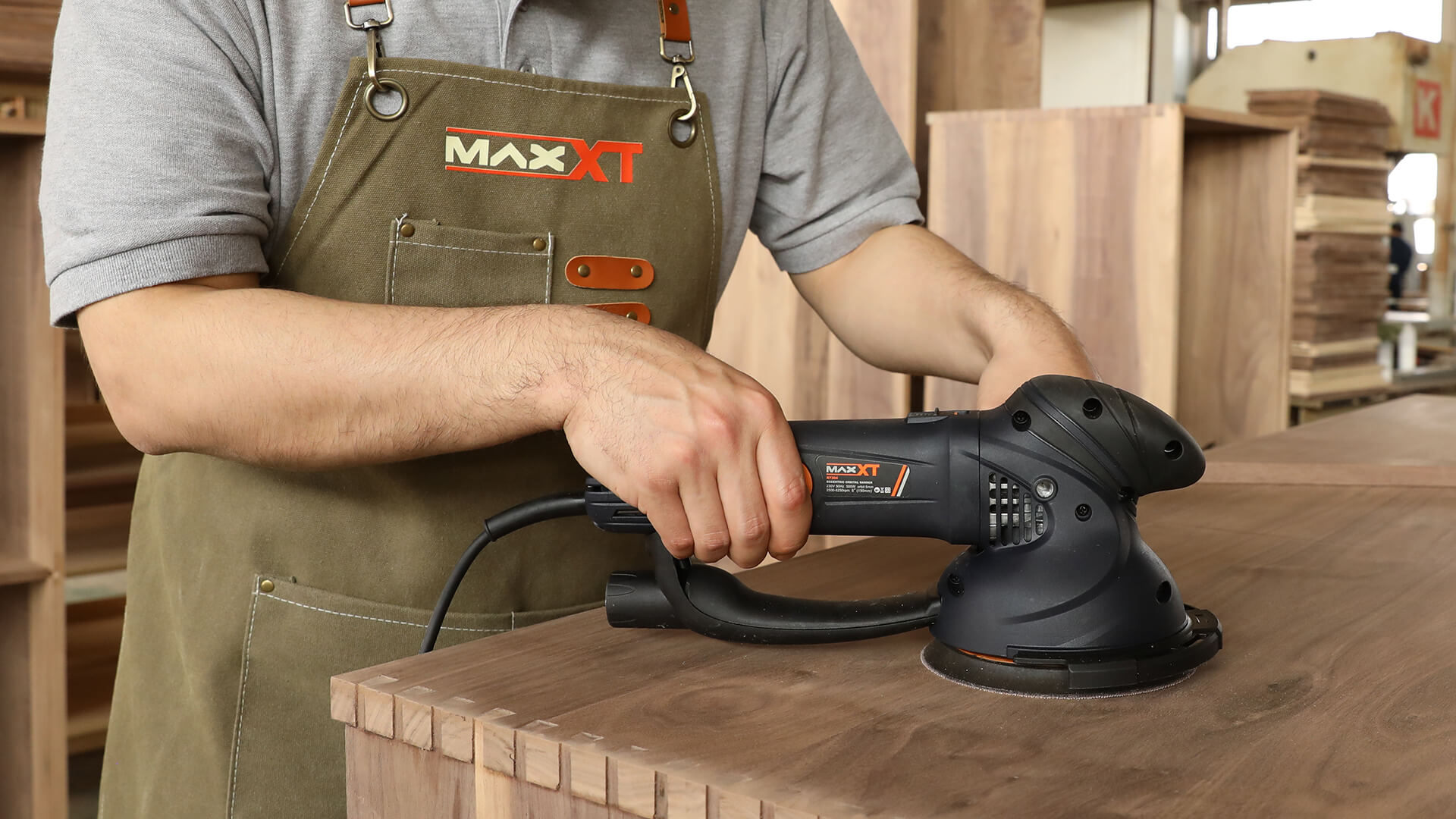The decision between hand sanding and power sanders can have a big impact on the outcome of your home renovation and woodworking tasks. You can make well-informed judgments for your project demands by using this guide to help you. Finding the right sellers for your sanders can also help you grasp the subtle differences between the two approaches.
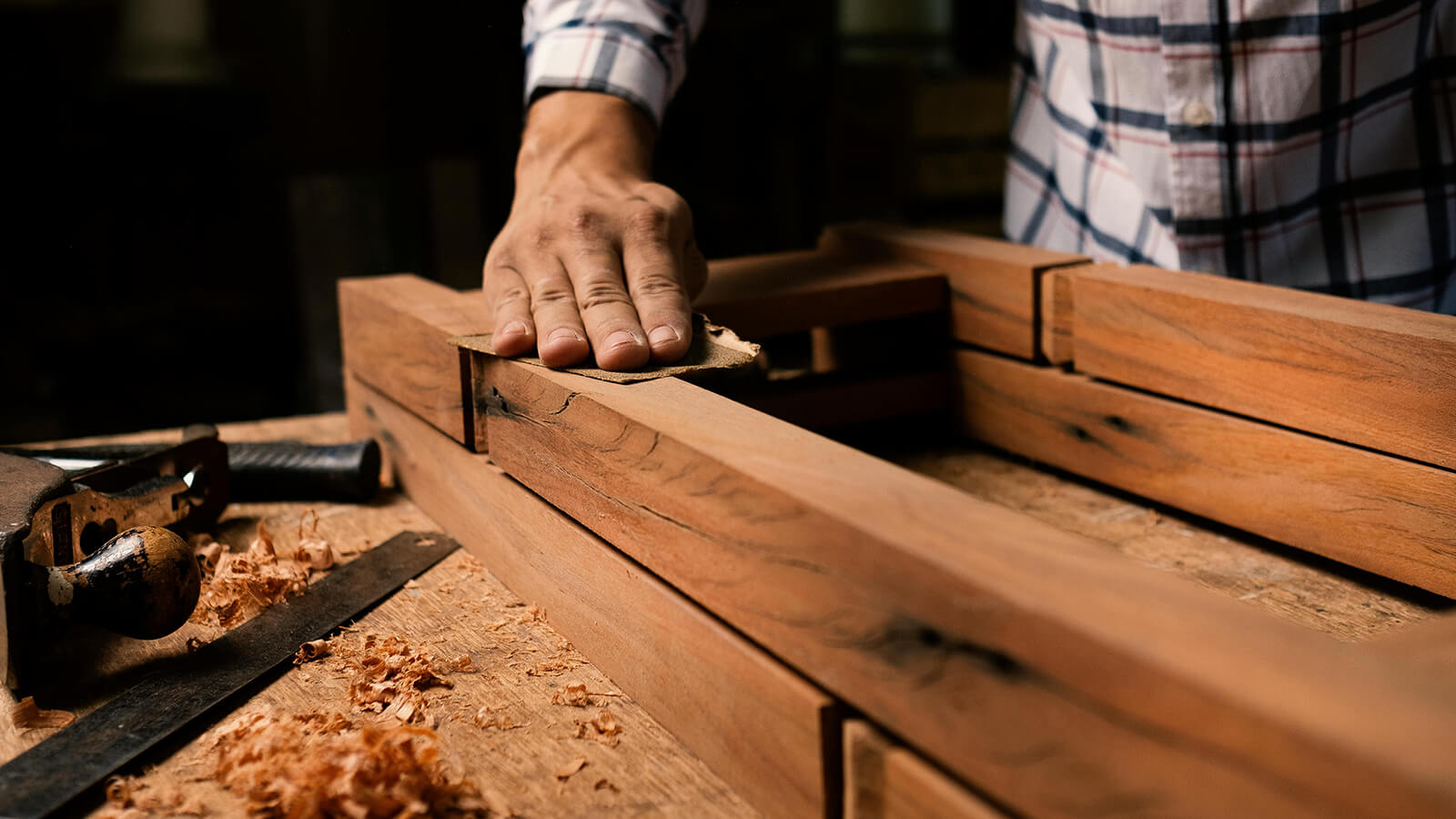
What is Hand Sanding?
Sandpaper, strength, and patience are all that are needed for hand sanding, which is the conventional method of surface finishing. Using this age-old method, abrasive materials are physically moved across a surface to smooth out flaws and get them ready for finishing.
Although the idea is straightforward, hand sanding requires knowledge of wood grain, pressure application, and surface reading. In order to eliminate major flaws, the procedure usually starts with coarser grits and works its way up to finer grits for a clean finish.
Essential tools include:
- Various grades of sandpaper
- Sanding blocks
- Specialized pads designed for different surface types and contours
What are Power Sanders?
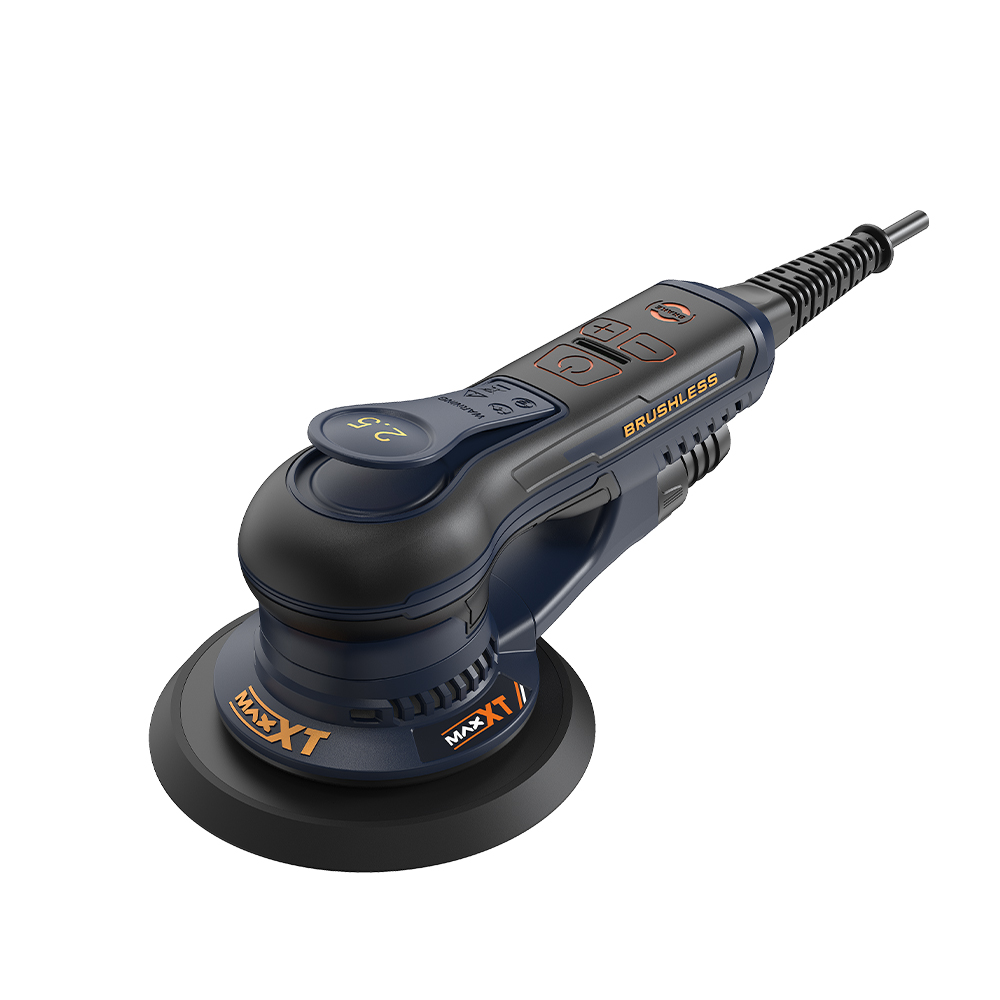
Power sanders represent the evolution of sanding technology, offering mechanized solutions for surface preparation and finishing. These electric-powered tools come in several distinct varieties, each designed for specific applications.
Orbital sanders deliver a circular sanding pattern ideal for fine finishing, while belt sanders excel at rapid material removal on large, flat surfaces. Random orbital sanders combine circular motion with an offset spin, helping to prevent swirl marks on the finished surface.
Detail sanders feature triangular pads perfect for reaching corners and tight spaces. The market offers everything from heavy-duty professional models to compact units designed for DIY enthusiasts.
Further reading: How to use an orbital sander?
What You Need to Know About Hand Sanding
Here are some advantages and disadvantages of using this approach:
Advantages of Hand Sanding
Hand sanding offers unparalleled control over the finishing process. When working with delicate surfaces or intricate details, the direct feedback through your fingertips allows for precise pressure adjustment and immediate response to surface changes.
This method proves particularly valuable when working with antique pieces or high-value materials where mistakes are costly. The minimal initial investment makes hand sanding accessible to everyone, from beginners to seasoned craftspeople.
Additionally, the absence of power tools means you can work without noise or dust collection systems, making it ideal for small, indoor projects or situations where power isn’t readily available.
Limitations of Hand Sanding
Despite its advantages, hand sanding comes with significant drawbacks. The physical demands can be substantial, particularly when working on larger surfaces or harder materials. Projects that might take minutes with a power sander can stretch into hours when done by hand.
It is difficult to get outcomes that are exactly the same throughout wide areas. This is due to the fact that it gets harder and harder to sustain constant pressure and movement patterns over time. For large-scale or commercial undertakings, repetitive motion is impractical due to the possibility of weariness and repetitive stress injuries.
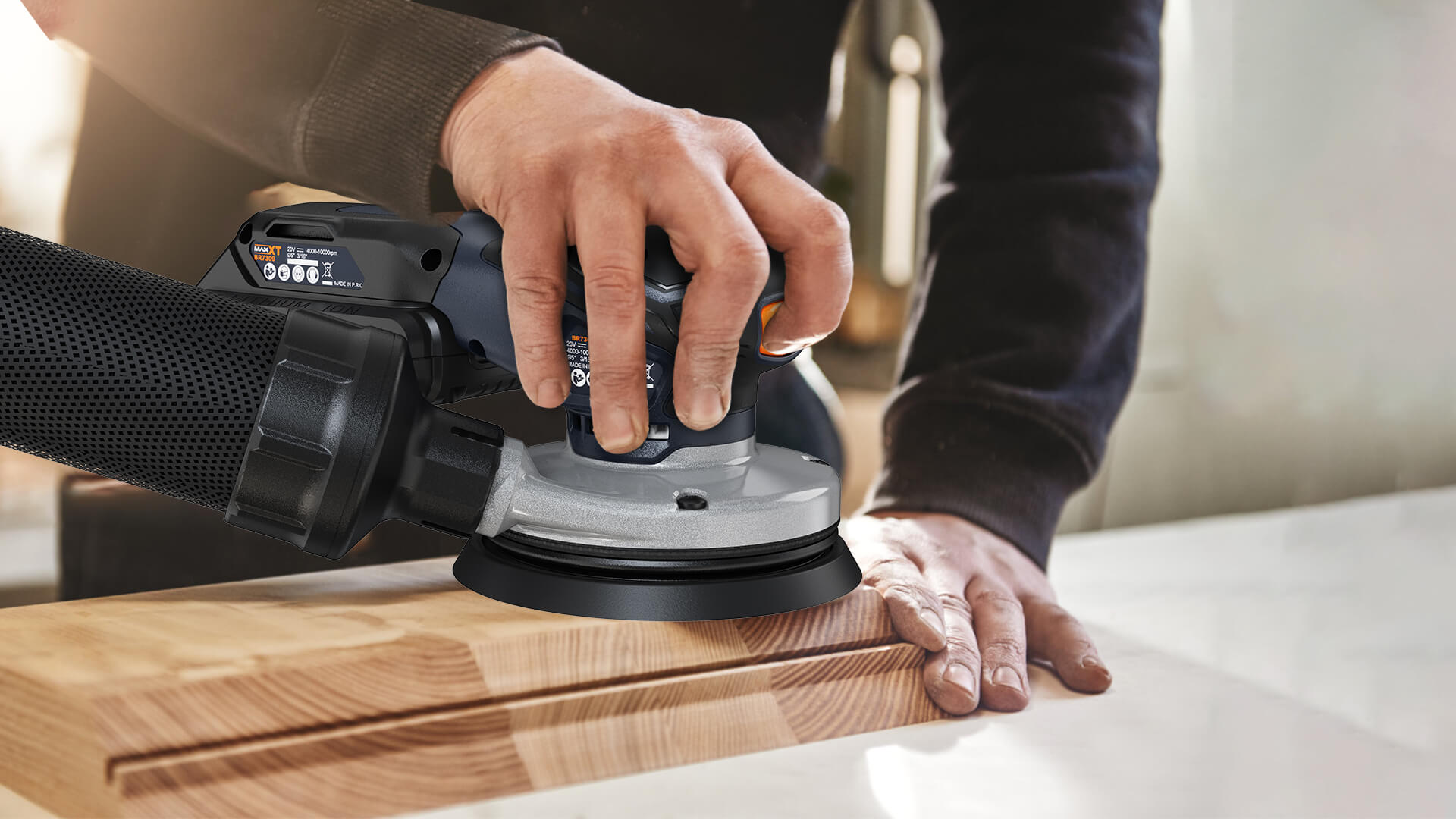
Pros and Cons of Power Sander
Benefits of Using Power Sanders
Power sanders revolutionize the surface preparation process through their efficiency and consistency. Their motorized operation significantly reduces physical strain while dramatically increasing work speed.
These tools excel at maintaining uniform pressure and movement patterns, resulting in more consistent finishes across large surfaces. Modern power sanders often feature dust collection systems, making them cleaner to use than hand sanding.
The variety of available models means you can choose tools specifically designed for your typical projects. This could range from small projects like fine furniture finishing to more advanced and rough construction work.
Drawbacks of Power Sanders
Although power sanders have many benefits, there are drawbacks as well. When investing in professional-grade equipment, the initial outlay can be significant. These instruments may be scary to novice users, and there is a genuine chance that excessive material removal or poor technique could harm workpieces.
The noise and dust produced necessitate the need for extra safety gear and dust collection devices, which raises the setup’s overall cost and complexity. Additionally, power sanders have trouble with delicate surfaces or particularly fine work where the mechanical action may be too harsh.

How to Pick the Right Method for Your Project
Here are some factors that could impact your decision in the end:
Project Size and Complexity
The scope and intricacy of your project play a crucial role in determining the most appropriate sanding method. Large-scale projects, such as refinishing hardwood floors or preparing exterior siding, naturally lean toward power sanding solutions due to the sheer surface area involved.
Conversely, detailed work on carved furniture pieces or delicate trim work often demands the precision of hand sanding. Consider breaking down complex projects into components, potentially utilizing both methods for optimal results.
Surface Material
Different materials demand different approaches to sanding. Softwoods might require gentler techniques to prevent gouging, while hardwoods can withstand more aggressive power sanding. Delicate veneers and thin plywood surfaces benefit from careful hand sanding to avoid breaking through layers.
Metal surfaces often require specialized power sanders with appropriate abrasive materials, while plastic and composite materials might need specific techniques to prevent heat damage. Understanding your material’s characteristics helps inform the most appropriate sanding method.
Desired Finish Quality
The level of finish you’re aiming to achieve significantly influences your choice of sanding method. Fine furniture pieces requiring a glass-smooth finish might benefit from a combination approach – power sanding for initial surface preparation followed by careful hand sanding for the final stages.
Production work where consistency across multiple pieces is crucial might rely more heavily on power sanders. Projects requiring a more rustic or hand-crafted appearance might lean toward traditional hand sanding techniques.
Budget and Available Tools
While the initial investment in quality power sanders can be substantial, consider the long-term value if you frequently undertake sanding projects. Hand sanding tools, though less expensive, require ongoing replacement of consumables and investment of time.
Professional workshops might justify high-end power sanding equipment through improved productivity, while occasional DIYers might find a basic collection of hand sanding tools sufficient for their needs.
Further Reading: How to Sand Drywall for Professional Results? The Ultimate Guide
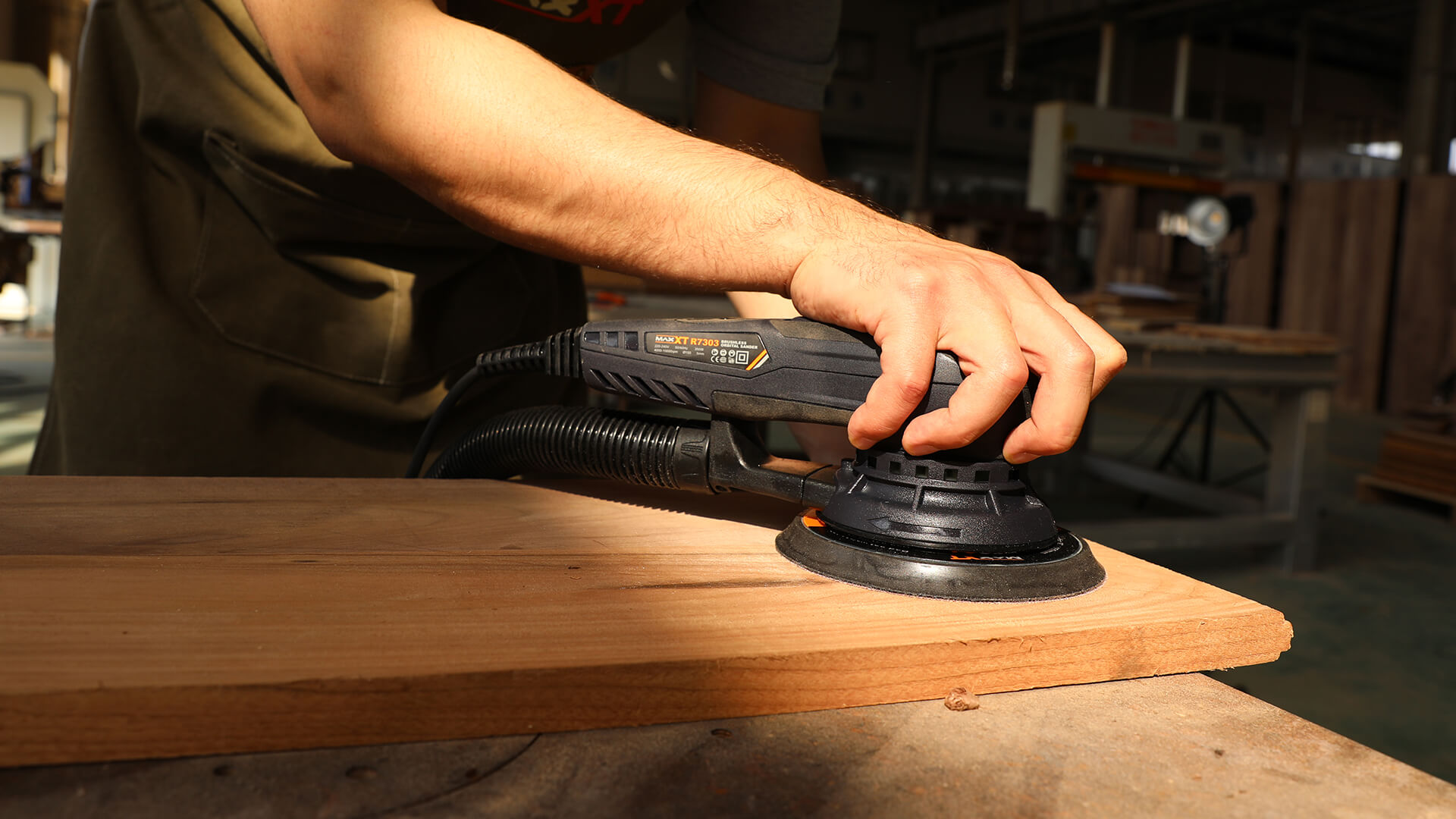
Pro Tips and Techniques for Optimal Results
We recommend these methods for your projects based on their nature:
Wood Projects
When approaching wood projects, consider the specific characteristics of your timber and the desired outcome. Start with coarser grits to remove major imperfections, then progressively move to finer grits for smooth results.
Power sanders excel at initial surface preparation and removing old finishes, while hand sanding proves invaluable for final smoothing and working with grain patterns. Pay particular attention to the end grain, which typically requires extra attention and finer grits to achieve a consistent finish with the rest of the piece.
Furniture Restoration
Furniture restoration demands a careful balance between efficiency and preservation. Antique pieces often require predominantly hand sanding to preserve historical value and prevent damage to aged materials.
Modern furniture might tolerate more aggressive power sanding techniques, particularly on large, flat surfaces. Always test techniques on inconspicuous areas first, and be prepared to adjust your approach based on the piece’s condition and materials.
Home Improvement Tasks
Home improvement projects typically involve larger surfaces and more robust materials, making power sanders the primary tool of choice. However, detailed work around fixtures, corners, and architectural features often requires supplementary hand sanding.
Proper preparation, including protecting adjacent surfaces and ensuring adequate ventilation, becomes crucial when working on interior projects. Consider rental options for specialized sanders needed for specific tasks like floor refinishing.
How to Ensure Safety and Best Practices
Regardless of your chosen method, safety should remain a primary concern during your projects. When power sanding, always use appropriate dust masks, eye protection, and hearing protection. Ensure proper ventilation and dust collection to maintain a safe working environment.
Even hand sanding can generate significant dust, so basic protective equipment remains important. Maintain your tools properly, replacing sandpaper when worn, and keeping power sanders in good working order.
Conclusion: Finding the Ideal Sanding Approach
The choice of power sanding vs hand sanding rarely comes down to an either/or decision. Most successful woodworkers and DIY enthusiasts develop a hybrid approach, selecting the most appropriate method for each specific task within a project.
Remember that investing time in learning proper techniques for both methods will ultimately lead to better results. With practice and patience, you’ll find the perfect techniques to achieve professional-quality results in all your projects.
